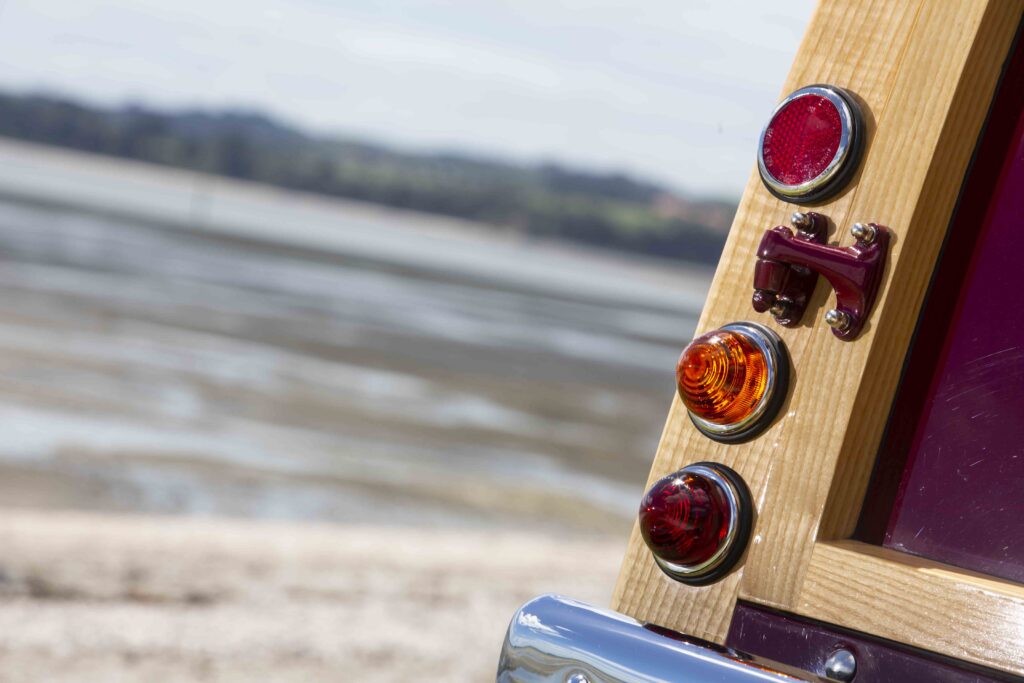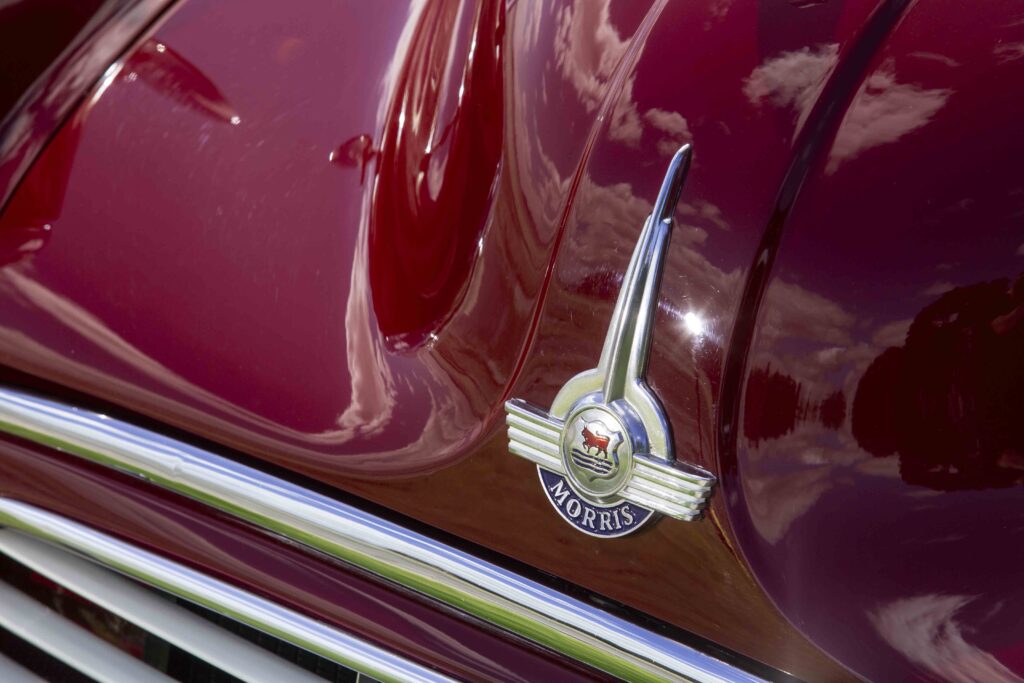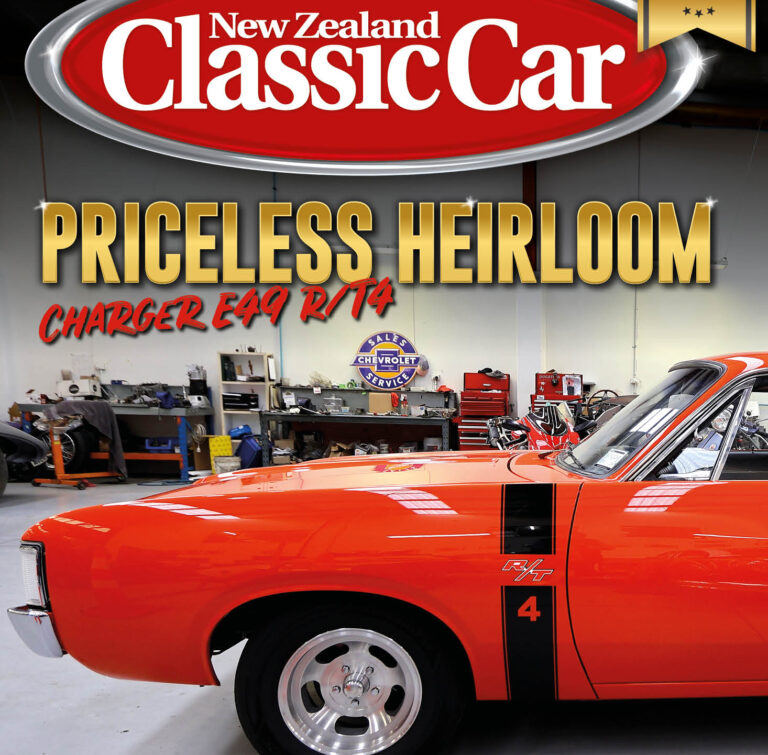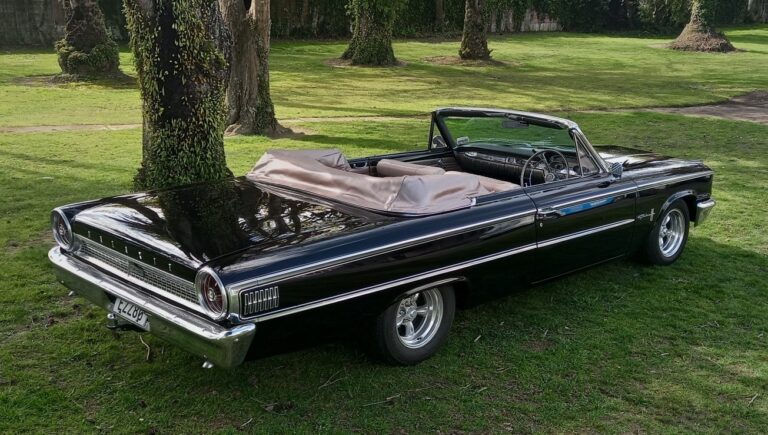The Morris Minor ‘Woody Wagon’ is one of the rarest and most desirable models produced and a design icon that was built to last
By Ashley Webb, photography by Strong Style Photo
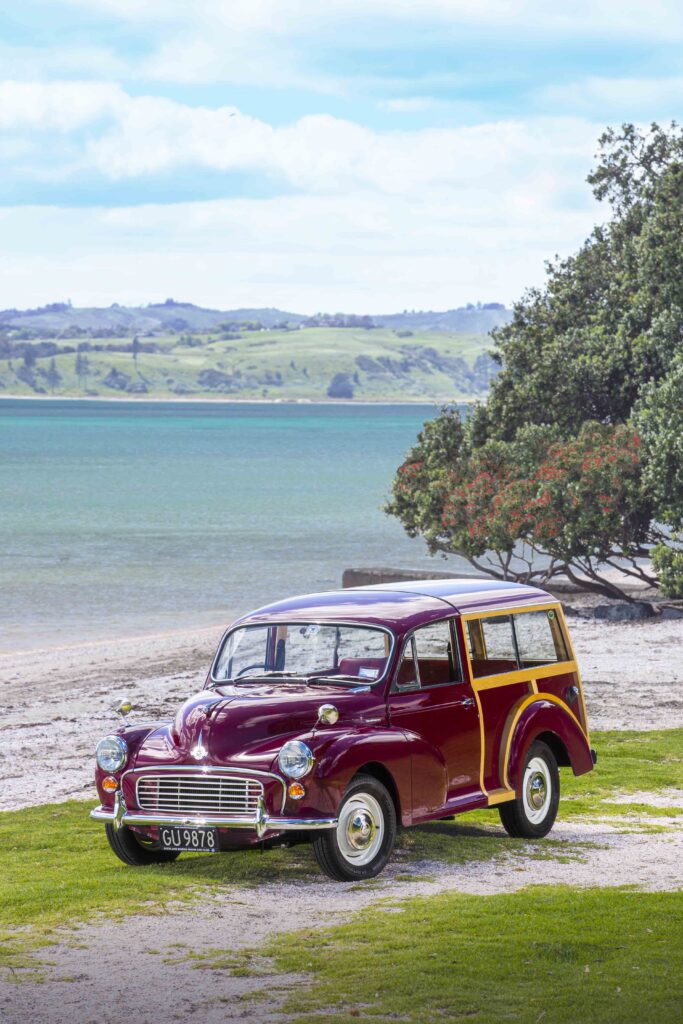
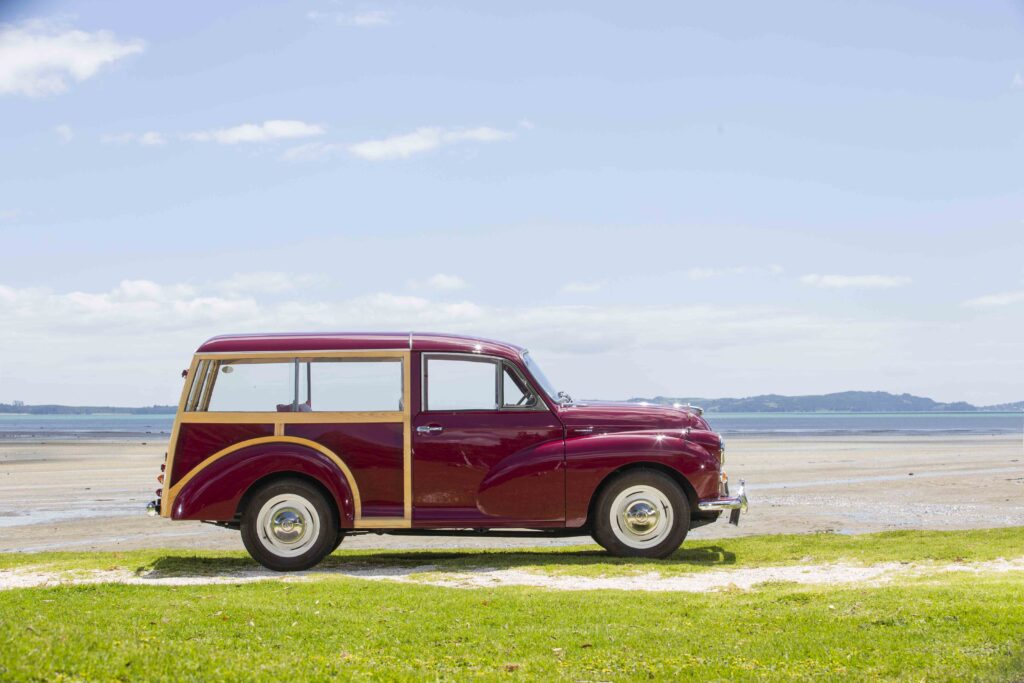
The Morris Minor was a hit from the first day it was shown to the British public in 1948 at the London Motor Show. Better known for his Mini, this car too was designed by Alec Issigonis, and was almost as sensational. It also proved wildly popular both at home and in overseas dominions. The Minor boasted a contemporary unit-constructed body, torsion bar front suspension, rack and pinion steering, and a lowish centre of gravity achieved by using small 133mm-size tyres on 14-inch wheels. This innovative design was state of the art for small car development and years ahead of the pre-war engineering that could be found under most of the European economy cars of the time.
Along with the four-seat convertible and saloon variants, an estate version was introduced, known as the Traveller — a Morris naming tradition for estates, also seen on the Mini. There was also a van version with an all-steel rear body and pick-up version..
In 1962 the Morris Minor 1000 was upgraded with the more powerful 1098cc engine which provided better performance and what was considered at the time relaxed cruising. The final improvements were made in 1964 and were confined to a two-spoke steering wheel, revised seats and switchgear, and the replacement of the ‘pull-start’ button with a much more modern combined starter/ignition switch.
As an everyday classic, the Morris Minor makes sense. Unlike most classic cars, you can keep these little cars running almost indefinitely as all the parts you will ever need — and there are not many of them in the whole car — are cheap and plentiful. Morris Minors are familiar friends to most classic-minded drivers and they are still gaining in popularity. The enduring affection for the ‘Moggie’, as it is known in Britain, or ‘Morrie’, as we Kiwis liked to call it, makes it likely the number of restored and improved examples on the road will only increase.
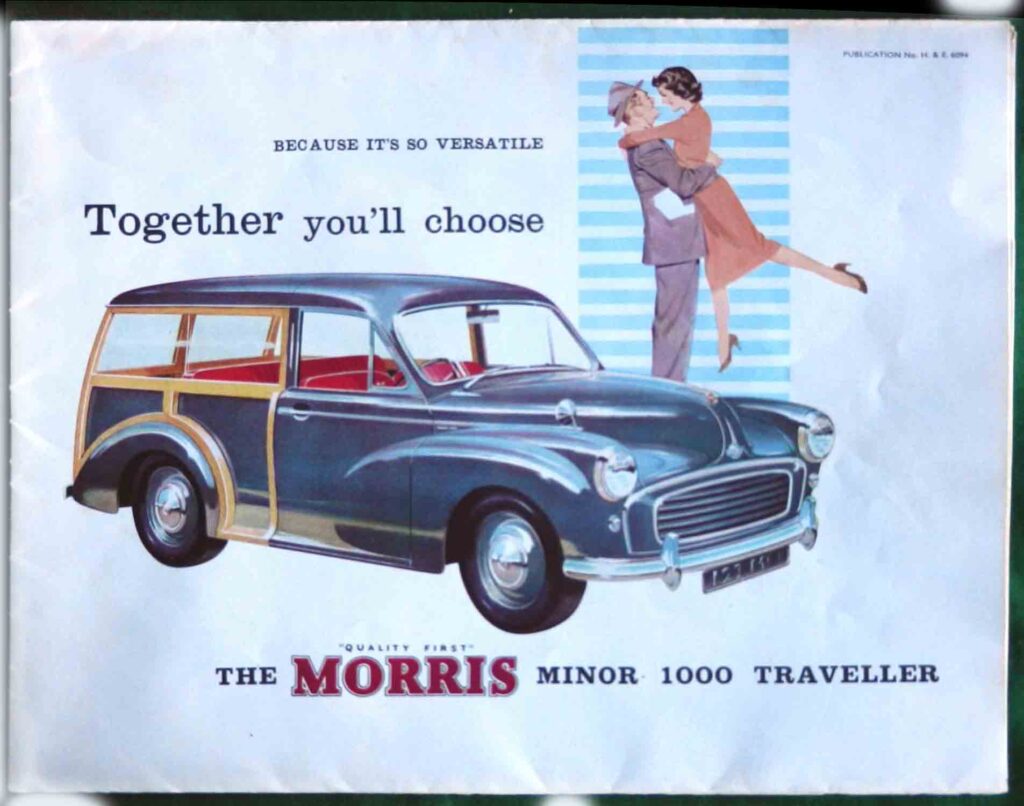
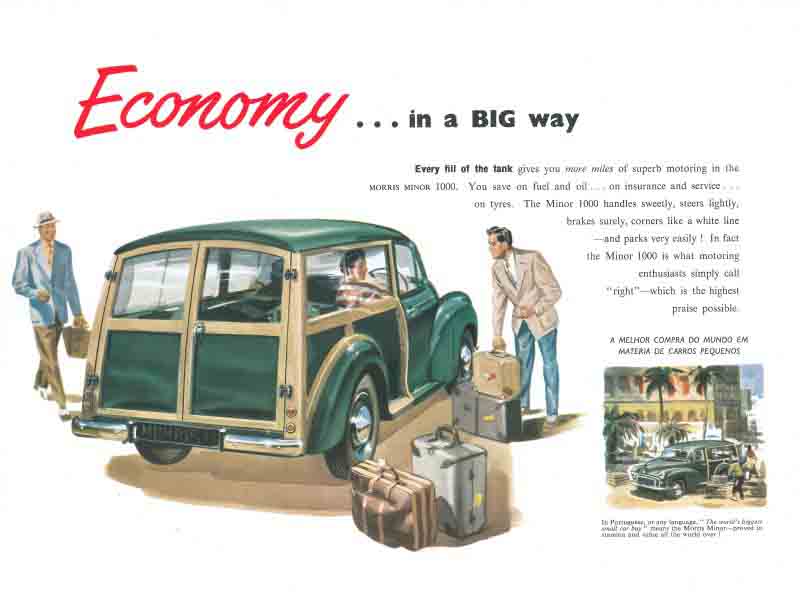
Reminiscing
Many of us hold fond memories of our very first car. I was recently reminded of mine when I saw Derek and Gail Goddard’s beautifully restored Morris 1000 Traveller. Unfortunately, my old 1950 Morrie wasn’t quite so pristine. When I bought it, the body was in fair condition, with no visible signs of rust, but I didn’t look to see what might be lurking underneath. The 803cc side-valve engine was once capable of an eye-watering 27.5hp (21kW) with a top speed of 103kph, but if my car ever did that it was long before I knew it. Burning oil and low compression were more obvious attributes; it would struggle at the slightest incline. Shifting gears was a hit-and-miss affair akin to stirring lumpy porridge with a long stick. That didn’t matter, though; I thought it was wonderful.
My father was a real fan of Morris Minors, and decided I should upgrade to a later model. My ’53 Morrie was a big improvement. With updated engineering and Austin-designed 948cc the overhead-valve A-series engine felt so superior to my old car — although the sloppy gear selector felt familiar. My girlfriend brought me large oval Parkercraft stickers from her work that proved ideal for placing over the rusty bits on my purple Morrie. It must have been a sight, but I thought it was the greatest thing since sliced bread.
Then, after I’d saved up a couple of hundred dollars, my father helped me find a 1960 Morris Minor 1000 for $450. I loved that car; the new OHV 948cc engine was definitely a breath of fresh air, but what I liked most about it was the revised gearbox, which incorporated a remote selector allowing a shorter gear lever and less unwieldy gear change action.
By this time, I was an apprentice and, as a young working lad, I managed to clock up a fair few miles in the light-green Morrie. Until one day — I think it was in about 1975 — when I was pulling into the driveway at work, my formerly trusty old Morrie decided to call it quits. The gearbox had seized. It wasn’t going anywhere under its own steam anymore. It was towed away, never to be seen again.
Going shopping for another car turned up an unusual choice for a serial Morrie owner: a 1968 Holden HK Monaro GTS — but that’s another story.
Today, I often see very nice Morris Minors at various car shows and I feel a familiar pang. It always makes me think I’d really like to own one again, for purely nostalgic reasons.
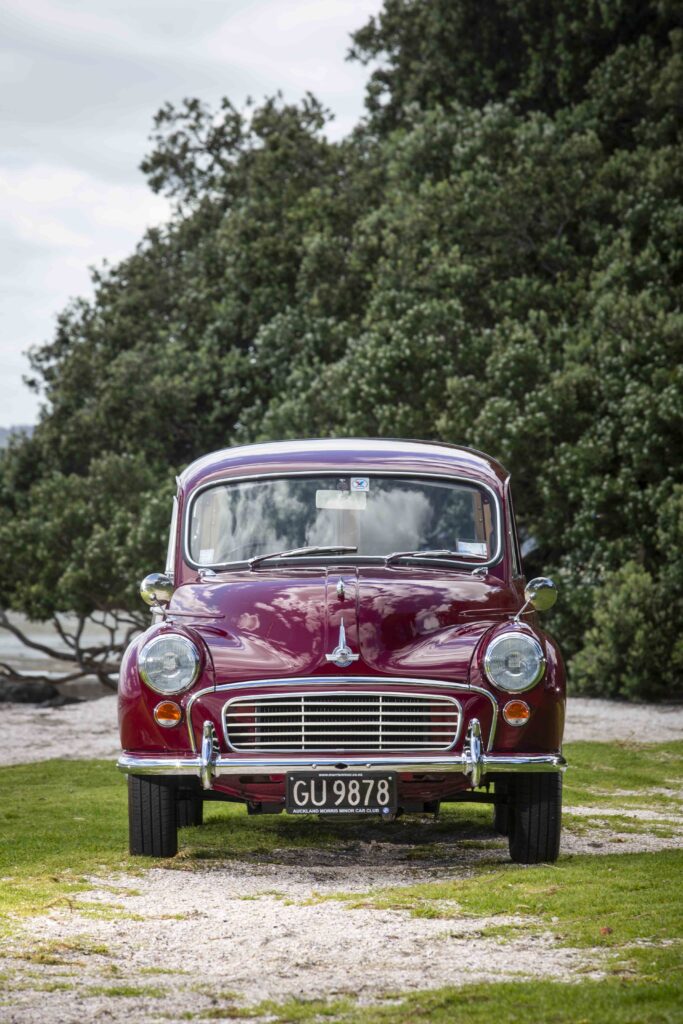

Best loved
Looking at our featured car it’s easy to see why the Morris Minor Traveller was one of the best-loved variants of the Morris Minor. Introduced in 1953, it was equipped with the same independent torsion bar front suspension, drum brakes, and rack and pinion steering as its saloon sibling but, with their foldable rear seat increasing versatility, many Travellers were used as trade vehicles, says Derek Goddard. Derek and Gail Goddard, the owners of this superbly restored example, have run Morris Minors since before they were married in 1974.
“Our honeymoon vehicle was a blue Morris Minor van — it was a rust bucket,” says Derek. “We had a succession of Morris Minors until our third son came along and Gail said ‘enough!’ Then we bought a Subaru station wagon. We had about four Morris Minors. We never particularly chose the Morris Minor; it was more that they were reliable, and cheap to buy and run,” he says.
In about 2003 the couple got the urge to go back to a car that had somehow convinced them it was part of the family. They bought a 1957 Morris Minor four-door saloon and had it completely restored over a period of three years. On its completion they joined the Auckland Morris Minor Car Club, of which Derek is currently president. A few years later they purchased a 1954 Morris Minor convertible, which also received a full restoration. They still own both cars.
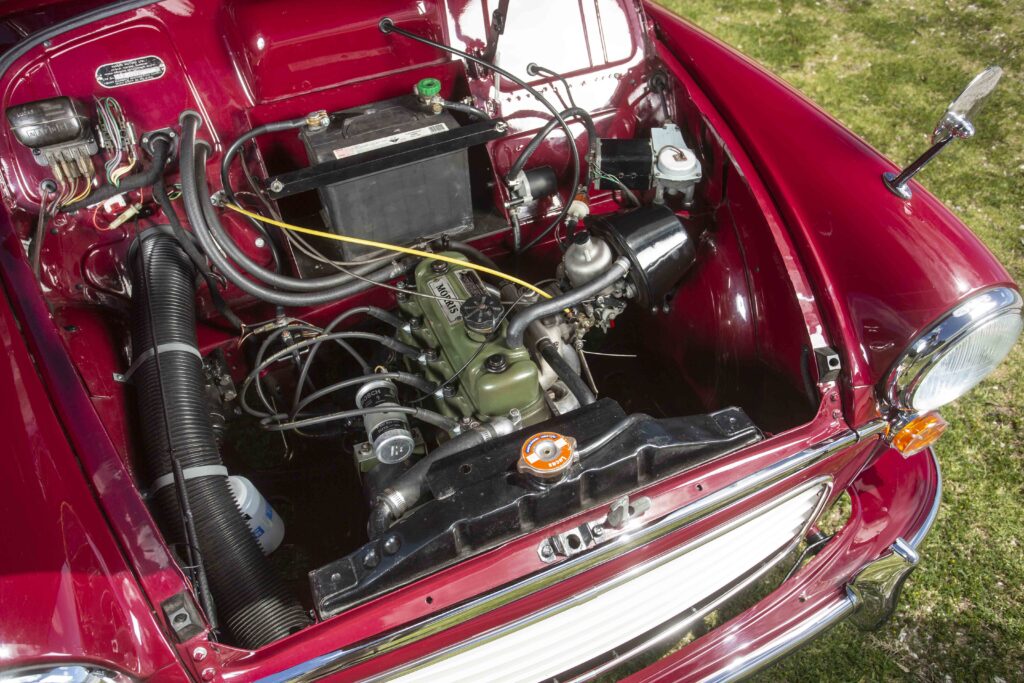
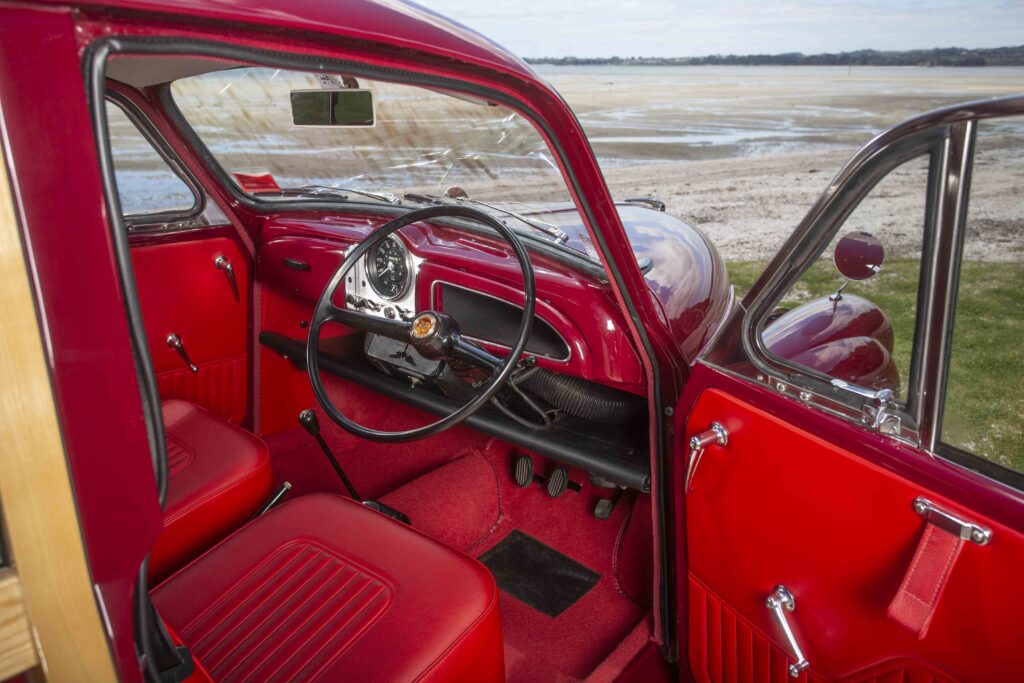
Farmers wife
Derek and Gail purchased this 1969 Morris Minor 1000 Traveller on 29 May 2012 with 142,000 miles showing on the odometer which is considered low for these eminently useable cars. They are only its third owners. The car was first registered to Mrs Wade in Essex, United Kingdom, on 19 December 1969. It was sold, at 24,000 miles, to its second owner, Mrs J Watson, in Sussex, United Kingdom, on 6 July 1972.
Mrs Watson married a New Zealand farmer and brought the Traveller with her, a prudent move in those days. It arrived in May 1973, and was based in the Waikanae area.
Derek purchased the car with the rego on hold and no WOF. The vehicle required significant rust repairs and the motor, clutch, and brakes needed attention. They opted for a full restoration.
Work occurred in two stages. Initially, critical rust repairs, suspension, and a brake overhaul were carried out to obtain a WOF and rego so that Derek and Gail could use the car on Auckland Morris Minor Car Club runs.
The second stage began in June 2013 with a large order of body parts from England, including various floor panels, and firewall to front bumper chassis rails. Derek ordered a complete Cherokee Red interior trim kit from Newton Commercial UK and, as the original woodwork had also seen better days, a full set of ash woodwork from Woodies, UK, in November 2014.
When designing the spacious Traveller, Alec Issigonis showed significant understanding and skill in working with timber. The Traveller featured an external structural ash timber frame for the rear bodywork, clad with aluminium panels, and van-like rear doors with flat glass were simply bolted to the frame. They put less stress on the structure than a tailgate and made production child’s play. The frame was varnished rather than painted and it became a characterful and charming feature of the Traveller’s body style.
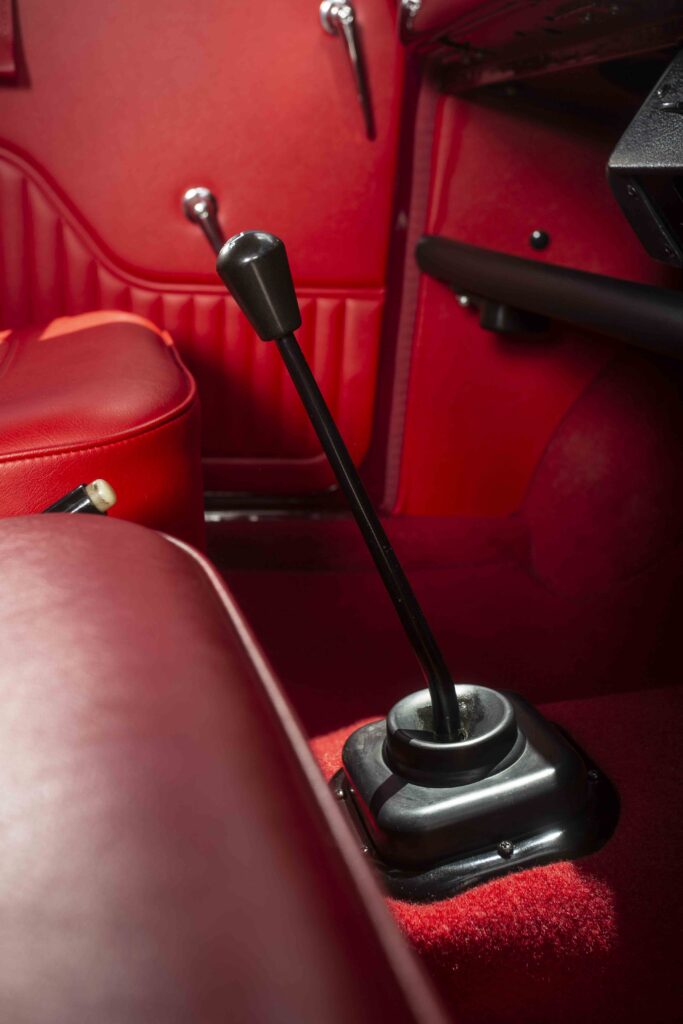
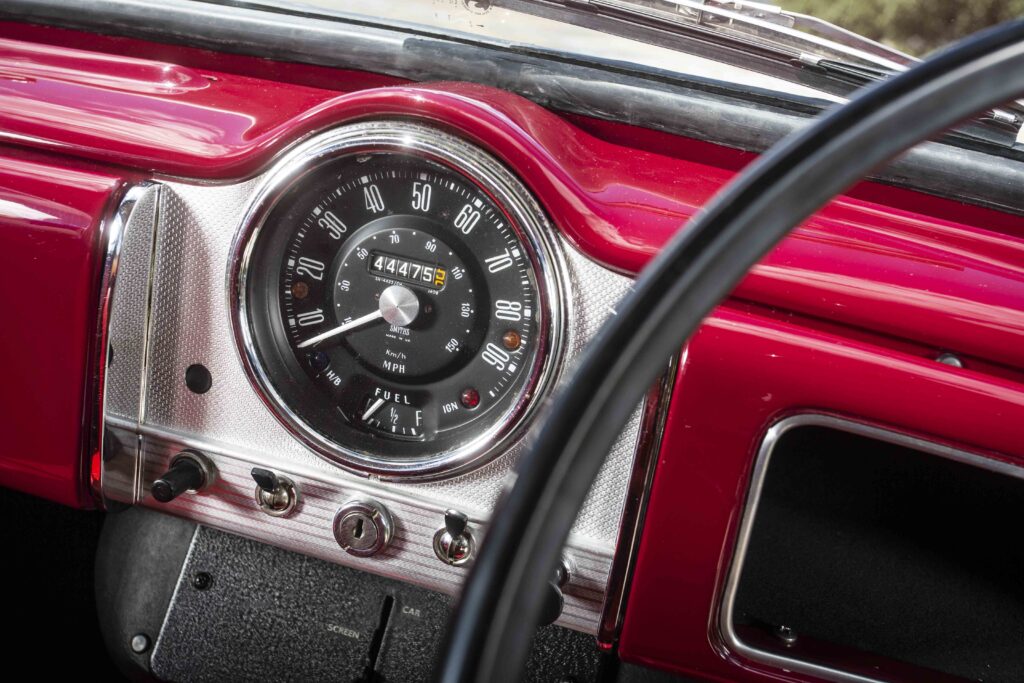
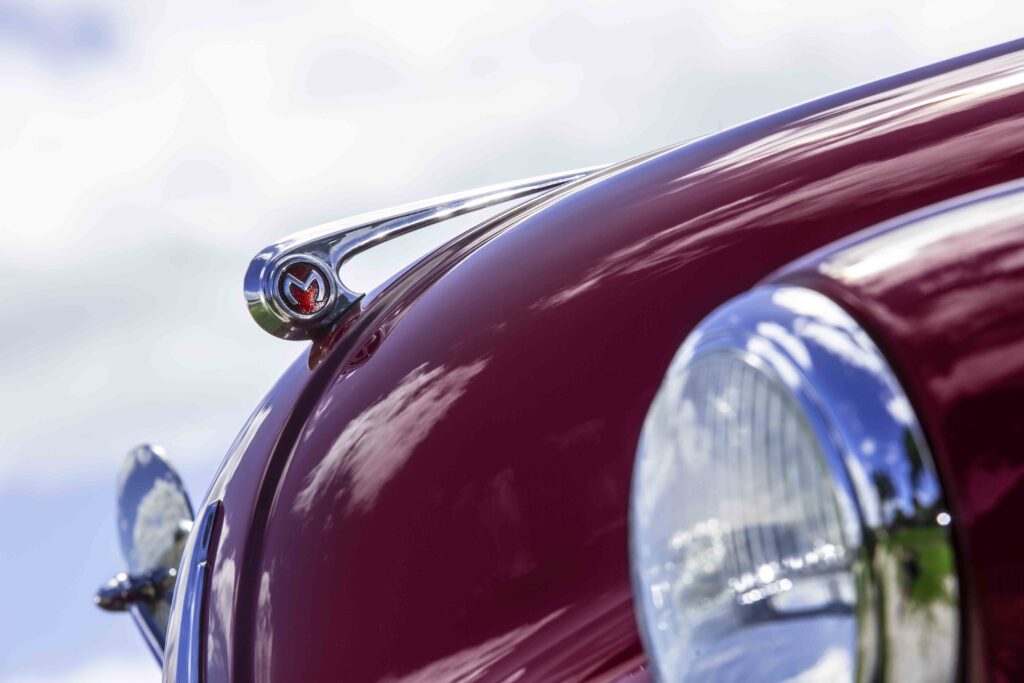
No return
By late 2014 the full nuts and bolt restoration was well under way. The panel/chassis and fabrication work was attended to by the late Kirk Harvey of North Auckland, whilst the entire body was media blasted back to bare steel. Advanced Auto Refinishers in Thames applied the stunning maroon colour scheme in January 2017.
Auckland company Engine Rebuilders carried out a full engine recondition in August 2015. It included performance pistons and street performance cam grind for additional get up and go. A 1.5-inch carburettor was also fitted, together with a free-flow exhaust system to complete the package. The four-speed gearbox was checked but required no additional refurbishing.
With all the bodywork, driveline, and mechanical components complete, Wayne Brooke-Cowden was tasked with the final assembly, which included fitting a new radiator, new suspension bushes, and reconditioned brakes. The next step — assembling and fitting the ash woodwork — was undertaken by New Zealand shipwright and woodworker Paul Tingey, and it was finished to perfection. The final task was the installation of the Cherokee Red interior trim kit, courtesy of auto trimmer J & D Fellowes of Auckland, which beautifully complements the exterior maroon finish.
The Morris Traveller was completed just in time to be displayed at the 2020 Ellerslie Classic Car Show, where it was deservedly awarded the chairman’s choice Gary McCrystal Memorial Trophy — a fitting tribute to an iconic travelling companion to the Goddards and to so many New Zealand families.
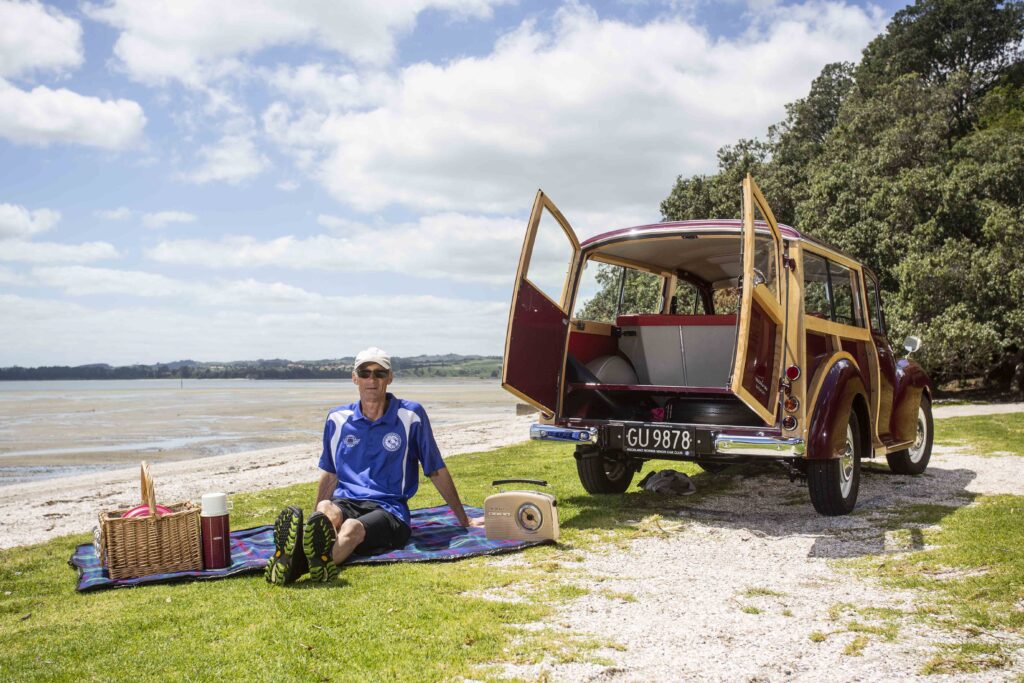
1969 Morris Minor 1000 Traveller
Engine – Morris in-line 4-cylinder
Capacity – 1098cc
Max power – 36kW @ 5100rpm
Max torque – 81Nm @ 2500rpm
Compression – 8.5:1
Bore x stroke – 646.1 x 83.7mm
Fuel system – Carburettor
Transmission – 4-speed manual
Steering – Rack and pinion
Brakes – Front/rear drum
Dimensions:
O/all length – 3770mm
Width – 1560mm
Height – 1530mm
Wheelbase – 2190mm
Kerb weight – 825 kg
Performance:
Max speed – 125kph
